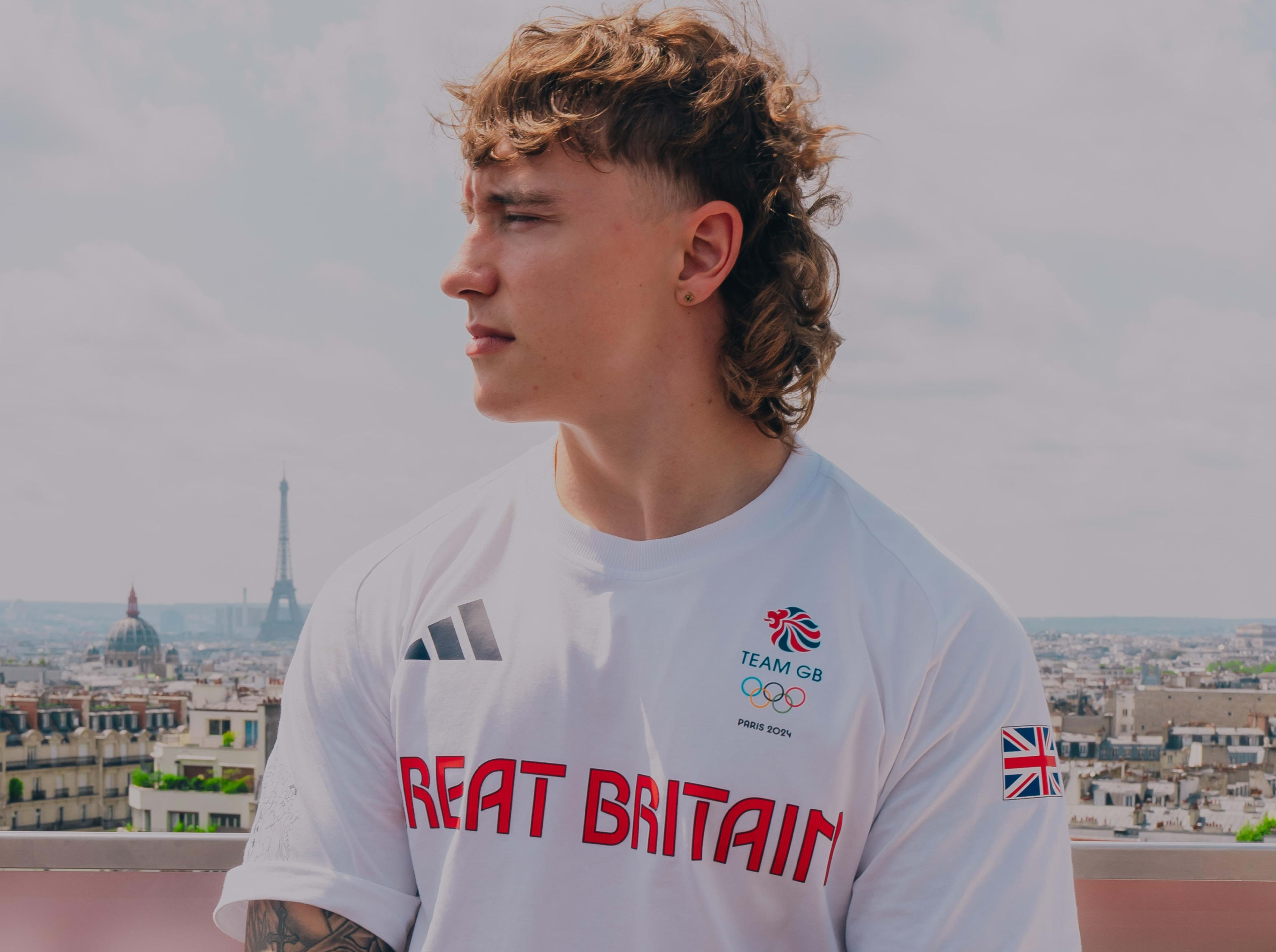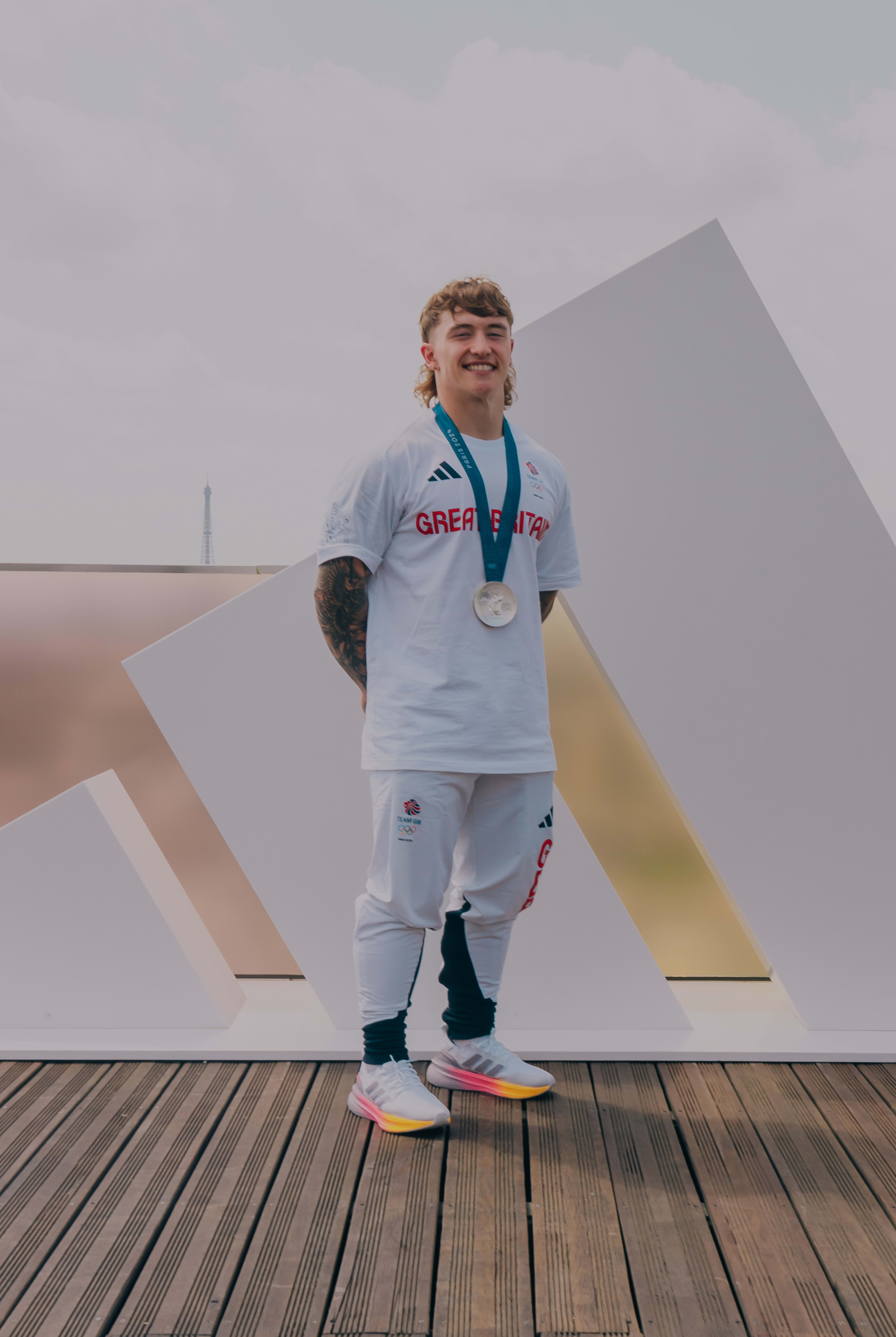GB Silver Medalist Keiran Reilly Was Destined For Bike Life
Complex UK caught up with the BMX star at the Paris Games 2024 to talk about the challenges of competing in such intense heat, the expanse of BMX freestyling, and his goals for inspiring more people to take up biking.
Bike life: a phenomenon born in childhood, developed in adolescence, and embraced in adulthood. Everyone has had some kind of bike experience—whether it’s road, mountain, e-bikes, or BMX—or perhaps they never rode at all. A few weeks ago, I walked my niece and her father to the station. She rode her small pink bike, perfect for a 3-year-old, with white handles, tyres, and silver accents. Her stabilisers were neatly balanced as she pedalled, learning how to steer. It won’t be long before she’s ready to abandon those stabilisers, trying tricks, and leaving her dad behind.
I hadn’t ridden a bike in years until about five years ago. When I returned to biking, renting Santanders and scanning Lime Bikes, the first thing I remembered was the joy. The wind in your hair, the speed controlled by your body, and the sense of accomplishment with each ride. My niece’s eagerness to get better mirrors the excitement I feel as an adult rider—pushing myself for fitness but also relishing the fun. Biking isn’t about age; it’s about passion, performance, pure enjoyment.
It’s a feeling that Keiran Reilly, Gateshead’s BMX Silver Medalist Olympian, has taken to incredible heights at the Paris 2024 Games. Raised in the skatepark, Keiran’s connection to his bike began with a gift from his parents. In a city where football dominates, Keiran found his place on two wheels; riding with friends and learning new tricks, his skills quickly evolved. In 2012, he nailed a 720 spin at a Glasgow skatepark, putting his name on the BMX map. And as his talent grew, so did the opportunities: Keiran trained with Team GB, and at 20 years old in 2021, he performed the world’s first triple flair jump at the Asylum Skatepark. By then, he was already being talked about as a top contender for the 2024 Olympics. In 2023, Keiran’s star rose even higher when he announced he had become an adidas athlete.
BMX Freestyle was introduced at the Olympics in Tokyo 2020, where British riders Charlotte Worthington and Declan Brookes claimed the first Gold and Bronze medals in the sport’s history. BMX freestylers get two 60-second runs to perform tricks on a ramp-filled course. Scores from the two runs are averaged, with the top 9 out of 12 riders advancing to the final. At the Paris Games, Keiran managed to edge out Frenchman Antony Jeanjean by just 0.15 points; he missed out on Gold to Argentina’s Jose Torres Gil by a slim 0.91 points. I had the privilege of watching this electrifying final in person, witnessing each rider push the limits under a scorching 39-degree sun.
The day after the final, I visited adidas House—a space for athletes and personnel during the Games. The house featured a mini museum displaying the history of adidas-supported Olympic athletes, from Adi Dassler’s first shoes worn by Lina Radtke to Noah Lyles’ Y-3s. In the centre of the room, ring screens continuously updated with scenes of medal-winning adidas athletes. While I was there, I saw a live update of Tom Daley claiming Silver. It was a phenomenal space optimised to uplift the adidas athletes.
Later on, I got the chance to speak with Keiran about his journey. We talked about the challenges of competing in such intense heat, the expanse of BMX freestyling, and his goals for inspiring more people to take up biking and BMX as a whole.
“My parents said that when I was a kid, I didn’t put effort into anything unless they put me on a bike at the skatepark. It was so true. I was such a lazy kid, and I wasn’t bothered about anything. At the skatepark, though, I’d just always have energy, and I didn’t realise what I was doing back then.”
COMPLEX: Keiran! Congratulations on your Silver medal win, man. I managed to attend the finale—fascinating stuff. It was my first time watching a full BMX competition and I loved it. How are you feeling a day after your exciting win in that amazing finale?
Keiran Reilly: It’s definitely still sinking in, still full of adrenaline, so I haven’t really stopped since I competed. Last night, I had maybe two or three hours of sleep and I’m still raring to go today—clearly still full of adrenaline and on a massive high. The last three years dreaming of this, and I’ve actually achieved it… It’s a special feeling.
From winning Gold at the World Championships and European Games to now winning Silver at the Olympics, how has the journey been for you?
It’s been crazy! When I first started my Olympic journey, I wasn’t even a part of the British team or anything that was going around competing. When I joined up in 2022, I had an okay year. Doing my first World Cup at national level events, I knew I was going to be an underdog, coming into the games and trying to qualify. In 2023, after putting a lot of work in and just having a stellar year, going in as an underdog, I quickly became one of the favourites in Paris. That added a lot of pressure, but it kept me riding and training even harder. I used it to my advantage, or at least tried to. It’s crazy for us to get ready for an event that far in advance. We’re so used to peaking our riding for an event in a month’s time, or something like that. And so looking at an event over three years down the line—and after every single event on the way there, knowing that’s not the goal, the Olympics is—it’s a crazy, crazy feeling.
BMX has its own culture and community, and it was great to see all the different nationalities, levels of competition, and approach to riding in general. Now that you’ve reached this new level, is there anything else that you’ve noticed regarding different competition?
I think everyone definitely brings their own style to a course, their own style of riding. In the same way like someone has a style of playing football. You see that, you watch a competition and everyone is so different. That’s what I love about the sport—it’s so creative. In the last Olympic run, BMX riders have all become proper athletes. You have to put yourself through something so physically demanding. In order to do that, the consistency level has to be top tier. You have to treat your body like any other athlete. You can see that in BMX, the sport is being pushed so much through the games.
There’s a skate park in Crystal Palace, and in knowing people who use it, I gained an impression of skate park culture: skateboarding, roller-skating, biking. There’s quite a few people who take their BMX’s to the park and practise their skills, too, from young kids to adults. It also reminded me of the comments you made on BMX culture within Newcastle. So I wondered: how did your journey begin, what got you invested in it, and how do you see the surrounding culture now?
Growing up, for me, it was all about having a bike and playing out with your friends. Pedalling, seeing whose house had all the bikes outside of it, seeing where all the people were. Outside of my parents house, there was a football field, and then a skatepark; I’d always have kick-abouts as a kid. Then, eventually, I saw all the kids at the skatepark doing tricks. The bikes we were riding around on quickly evolved into BMXs at Christmases or birthdays. I just got hooked, and quickly too: as soon as I got that first taste of adrenaline rush, I just fell in love with the sport, with no fear and trying to catch up to the other kids who could do tricks. The other kids really took me under their wing, so when some of my friends kind of ventured away from it and did other things, I lived at the skatepark—every waiting moment of the day.
The BMX culture, so to speak, is so social that I wasn’t even realising that I was progressing, putting in work or effort. My parents said that when I was a kid, I didn’t put effort into anything unless they put me on a bike at the skatepark. It was so true. I was such a lazy kid, and I wasn’t bothered about anything. At the skatepark, though, I’d just always have energy, and I didn’t realise what I was doing back then. I was training without realising it. I loved riding my bike so much that every day I wanted to learn a new trick, and I was doing it around my friends. Going from that to now is exactly the same: I’m training everyday, with like-minded people that I call my best friends, and the only difference is we’re training tricks that are a little harder than I was when I was kid. It still feels like I’m doing my hobby.
Image via Publicist
How did you navigate the intensity of the heat around the games?
We knew it was going to be hot, and we did some heat acclimatisation back home with a greenhouse set-up with basically a heater and kettle inside. You basically sit on a spin bike, train, and that’s the closest you can get. Back home in England, it is nowhere near as hot; we tried to do that to get used to this heat but it’s always different when you get here and you have to do your biggest tricks in it. We saw it affect everyone the last couple of days, especially qualifying day. I think it got up to 40 degrees when we were riding, which was the hottest I have ever ridden in. I remember coming off the course and just looking for anywhere to put my head where it was cold, so I opened the ice bucket that we had, took a towel out, and just sat with it. I was soaked, but I dried instantly because of how hot it was. I think it affects you more in the practice, as soon as you have the adrenaline. You are so focused on the competition, you can’t think of anything else. We got really lucky that it wasn’t as hot on finals day—it was a little cloudier, cooler, so it didn’t really affect me as much from doing some work to acclimatise before.
I was dying here because of the heat—a slow roasting lamb sitting next to the railings [laughs]—and it made me consider the intensity of those two runs on a normal day, now intertwined with the heat. How do you personally navigate the pressure of these runs to ensure you get your desired outcome?
I think, for me—and it took me a while, working with numerous people, to learn this—just thinking about why I am there, that’s for yourself. As selfish as that sounds, whenever I’m at the top, it would be easy to feel the pressure from all the outside noise, so to speak, of everything else going on. What kept me in it last weekend was just thinking of the run I wanted to execute. The reason I’m here is because I loved riding BMXs as a kid, and I love riding BMXs now. I know that if I execute the run I want to do, I can potentially step on the podium. I’m way more likely to do well if I don’t think about the things I can’t control. I just hope for the best and prepare for the worst. I made sure I was prepared, so when it was a high score, I knew what I had to do. Staying in my own lane at the top of the dropping ramp kept me focused on what I needed to do.
Have you ever thought over the duration of your career, and now as an adidas athlete and Olympic Silver Medalist, when you get back home how you would use your experiences to encourage people who are in or want to get into the sport at the highest level?
The amazing thing is, for a lot of people, the first time they see BMX is at the Olympics. I hope that inspires kids, people of any age, to pick up a bike and give it a go. The tough thing is, like with any sport, people will see the level and it will seem unattainable. You just need to pick it up one time and you’ll fall in love with the sport. If you have tried it before, I guarantee you will come back. I’ve done coaching before with kids with their parents, and the parents have enjoyed it just as much. If I go home with this medal and try to inspire people to do that, I would love for people—especially in Newcastle, where I’m from—to understand that we don’t need the best facilities or the best training place in the world to enjoy riding a BMX, and that’s where it all starts. If you enjoy riding a bike, all the hard work you put in is not entirely hard work, and when you get to the point you want to be competitive, you can figure it out from there.


